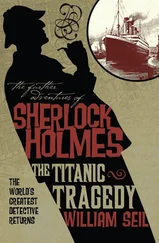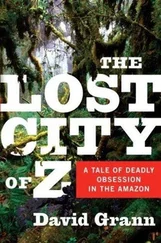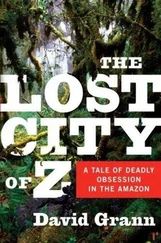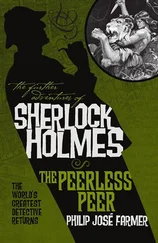Initially, O’Shea told me, he had thought that he would dissect his corpses in his office. But, after he made an incision in one, the specimen released a noxious odor, a mixture of rotting flesh and ammonium (which keeps the animal buoyant in the water). Students and faculty fled the building, and he was soon forbidden to make further dissections there. “I became quite unpopular after that,” he said.
He began to pick up various jars. “Oh, here it is,” he said, holding up what appeared to be a stem of tiny grapes.
“What is it?” I asked.
“The eggs from the ovary of a giant squid. I have a freezer full of ’em.”
The phone rang. He stared at it without moving. “They’ll only want something,” he said.
He stuck a pair of tweezers inside the jar, pulled out a strand of eggs, and placed it under a microscope. “Go ahead, mate, take a look,” he said. When I looked into the eyepiece, I could see at least a hundred eggs, each no more than two millimeters wide. O’Shea said that he planned to attach the eggs, which may produce pheromones, to an underwater camera, in the hope of luring a giant squid close enough to be captured on film.
He sat at his computer, typed for a few minutes, then stopped abruptly and ran out of the office. He returned moments later, carrying two hula hoops. “We’re almost ready,” he said.
The phone rang again. “Oh, bloody hell,” he said, and let it ring. He picked up another jar, this one containing two black shells that appeared to lock together. “It’s the beak of a giant squid,” he said. I ran my finger along its sharp edge, which pricked my skin. He said he had found it inside the stomach of a sperm whale.
He began to race around again, and before long his arms were filled with a box of specimen jars, the hula hoops, a net, a hammer, a rope, a worn leather briefcase that was only half buckled, and several rolled-up maps. “O.K., I think we’re about ready,” he said. “I just need a smoke, and we’ll be off.”
For months, he had been carefully working out our destination, studying squid migration patterns as well as satellite readings of water currents and temperatures. His plan was to go south, where he had found the paralarvae before. At the last minute, however, he changed his mind. “We’re going north,” he said. As we got back in his truck, he added, “I should warn you, there’s a bit of a cyclone coming our way.”
For as long as sailors have been going out to sea, they have been returning with stories of monsters. The Bible speaks of “a dragon that is in the sea”; the Roman encyclopedia “Naturalis Historia” tells of an enormous “polyp” that was “smeared with brine and had a terrible smell.” As the science writer Richard Ellis demonstrates in his 1998 book, “The Search for the Giant Squid,” from these disparate accounts emerged a common portrait of a singular beast: a huge sea creature, with fearsome appendages—arms or horns or feet or legs or tails—that jutted out of its head. In “The Odyssey,” Homer describes a beast called the Scylla:She has twelve legs, all writhing, dangling down
and six long swaying necks, a hideous head on each,
each head barbed with a triple row of fangs …
No mariners yet can boast they’d raced their ship
past Scylla’s lair without some mortal blow.
In Norway, sailors sometimes reported sightings of a tentacled predator, which they dubbed the Kraken. (The word is a colloquial term for a tree with the roots still attached.) In 1755, Bishop Erik Ludvigsen Pontoppidan included the animal in his “Natural History of Norway,” claiming that the Kraken was the size of a “floating island,” with horns as long as a ship’s mast. He went on, “It seems these are the creature’s arms, and, it is said, if they were to lay hold of the largest man-of-war, they would pull it down to the bottom.”
Meanwhile, American whalers were exchanging their own stories of a “devilfish.” In 1851, Herman Melville, who had worked for three years on a whaling ship, published “Moby Dick,” in which he describes a sailor who is witness to “the most wondrous phenomenon”: a “vast pulpy mass” with “innumerable long arms radiating from its centre, and curling and twisting like a nest of anacondas.”
Around the same time, Johannes Japetus Smith Steenstrup, an eminent Danish zoologist, decided to investigate the rumors himself. As Steenstrup sorted through the available evidence, he was drawn in particular to several accounts of a strange beast caught in the Øresund Strait in the fifteen-forties, and brought to the king of Denmark, at whose court it was preserved in a dried state as “a rarity and a wonder.” Named a “sea monk,” because its smooth-looking head evoked men of the cloister, it resembled, in an original sketch, a large squid. In an 1854 lecture, Steenstrup declared that the sea monk, like the Kraken, was “firstly a cephalopod”—a classification term which derives from the Greek words for “head” and “foot,” and refers to animals whose tentacles sprout from their head. To the amazement of his audience, Steenstrup then held up a glass jar containing the jaws of a giant squid, which he said had been retrieved from a dead specimen off the coast of Iceland. He named the creature Architeuthis (“ruling squid”)—marking, as Ellis has noted, “the official passage of the giant squid from the realm of fable into the scientific literature.”
Just as seamen had previously exaggerated the evidence for the giant squid’s existence, the scientific community now exaggerated the lack of it. Most scientists were still disputing Steenstrup’s findings when, in November, 1861, the crew of the French steamship Alecton, in the middle of the Atlantic, saw a Kraken rise up before them. The captain decided that he had to capture it, and ordered his men to fire their muskets. The bullets seemed to have little effect, so they hurled harpoons, which appeared to glance off it. Finally, they wrapped a noose around its tail, but, as they began to haul the creature on board, its enormous weight caused the rope to slice through its boneless flesh. All that remained was a piece of the tail, which was soon dispatched, along with a detailed report, to the French Academy of Sciences. The report inspired Jules Verne’s depiction of a menacing giant squid, but it did little to secure the organism a certified place in the animal kingdom. Arthur Mangin, a French zoologist, declared that the rotting tail was the remains of a sea plant, and urged “the wise, and especially the man of science, not to admit into the catalogue those stories which mention extraordinary creatures … the existence of which would be … a contradiction of the great laws of harmony and equilibrium which have sovereign rule over living nature.”
Scientists continued to doubt Steenstrup’s thesis until one day in 1873, when a fisherman off the coast of Newfoundland saw a creature floating on the ocean’s surface and struck it with a hook. The animal was alive, and reached up and tried to seize him; the fisherman then grabbed an axe. Over the years, the story was embellished, but one fact was undeniable: the fisherman returned to shore with a tentacle from a giant squid, which was nineteen feet long. It was placed in a museum, in St. John’s, Newfoundland, where the public could see it. At last, even the most ardent skeptic was forced to admit that the Kraken was real.
As the winds and rains from the cyclone began to descend on New Zealand, O’Shea stood in his back yard beside his boat, which rested on a trailer. The boat was not exactly what I had imagined it to be. It was barely twenty feet long and seven feet wide, with an outboard motor. There was no galley or head, and no place to sleep, except for a forward berth the size of a broom closet. “I suppose you were expecting one of those American yachts, weren’t you?” O’Shea said with a smile.
Читать дальше











